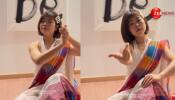London: Tongue-in-action! The first ever three-dimensional images of how tongues move inside the mouth during speech have been developed by researchers.
The `Seeing Speech` website is the first resource of its kind to make publicly available the inner workings of the human vocal tract when speaking.
It offers the best understanding yet of the processes that take place when people speak and will aid academics, teachers, health-care professionals and actors.
Ultrasound Tongue Imaging is a comparatively new technique that uses medical ultrasound machines to record an image of the surface of the tongue during speech.
Coupled with Magnetic Resonance Imaging (MRI) technology which images the entire vocal tract, including the action of the larynx and the soft palate .Academics have built a database of on-line recordings showing speakers` tongues moving inside their mouths during normal speech.
"This is a fantastic new web resource for anyone interested in how the tongue produces speech sounds," Claire Timmins, a lecturer in Strathclyde`s School of Psychological Sciences and Health, said.
"It provides clear, detailed images of speech production from a variety of English accents," said Timmins.
Also included in the resource is a video database showing accent differences in speech production across varieties of English, which will aid the study of accents and accent change.
Currently, there are no comprehensive resources that visualise what happens inside the mouth when people speak. This means students of linguistics only have access to snapshots of this dynamic process.
`Seeing Speech` provides access to ultrasound and MRI videos, presenting the tongue`s movement at full-speed and half-speed, to allow for detailed study.
"I am delighted to be able to launch this is unique collaboration between five Scottish universities that will really help advance a wide range of studies of speech production and accents," Jane Stuart-Smith, Professor of Phonetics and Sociolinguistics at the University of Glasgow - and Principal Investigator on the project - said.
"One problem encountered by phonetics teachers and students is that there is nothing out there that shows how speech sounds are actually formed. The only resources that we had to work with up to this point were static diagrams and models that break the vocal tract up into sections and provide a fragmented view of what are really synchronised, dynamic actions of the vocal organs," said Stuart-Smith.
PTI















